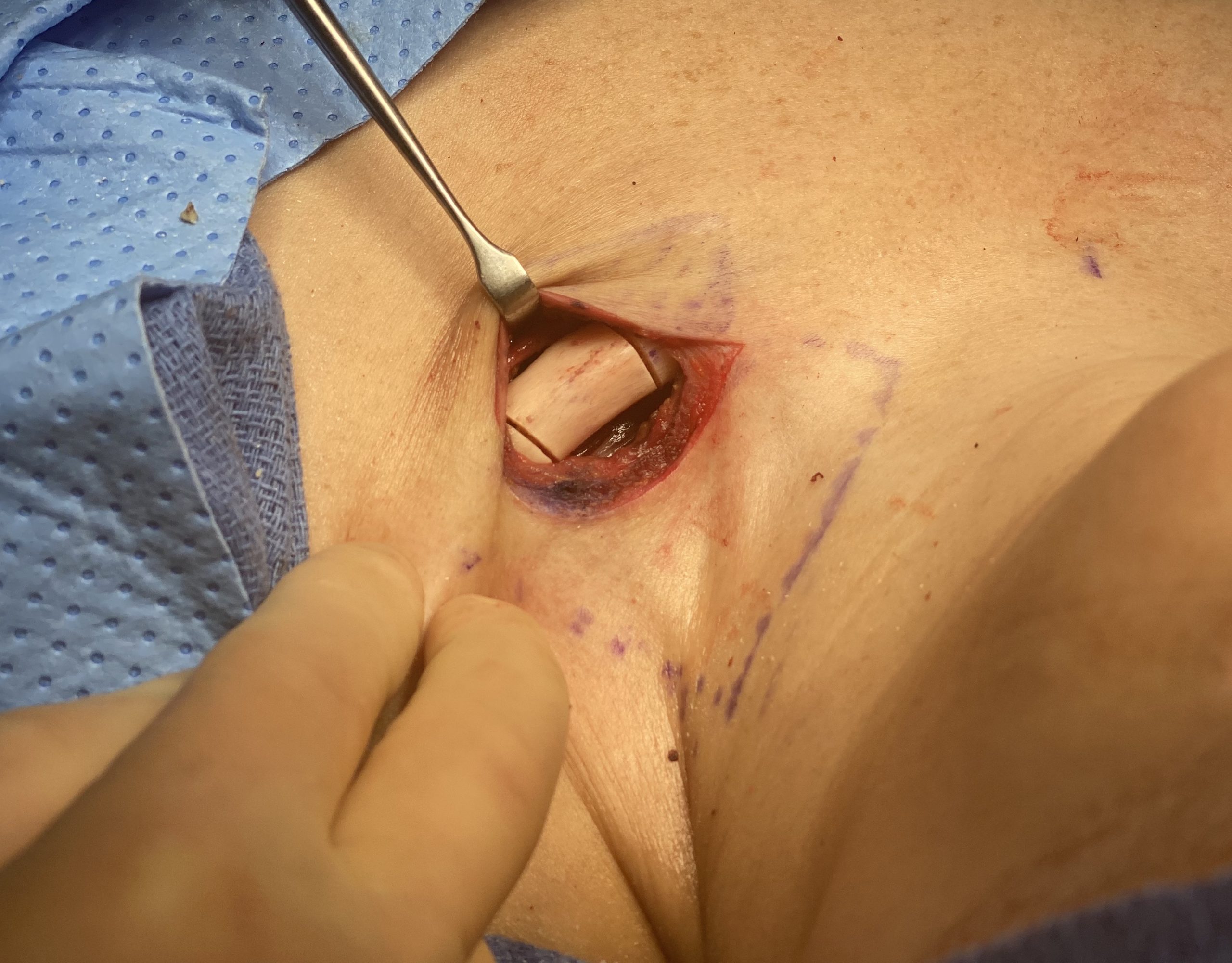Background: Shoulder narrowing surgery is done in either transgender male to females or cis-females for shoulder dysphoria. Having done many such procedures at this point I have had the epiphany that the term ‘shoulder narrowing’ does not accurately describe what occurs. Because the clavicle is a lazy s-shaped bone with a horizontal orientation, a removal of a segment of its length does result in less shoulder width but there is also a bit of anterior movement of the shoulder as well. These combined movements results in a change of a wider square-shaped shoulder in to more narrow rounded shoulder shape. Thus the term ‘reductive shoulder reshaping’ is a better descriptor of what actually occurs even if it is not quite a catchy term for the procedure.
While reductive shoulder reshaping is often performed as an isolated procedure, it is equally done with other body contouring procedures as well. One of its common procedural companions is that of waistline narrowing done by rib removal surgery. Softening the appearance of the shoulders combined with a more inward waist shape can be particularly beneficial in the transgender patient to try and achieve a more feminine body shape. But to put these two procedures together requires a qualified patient who is prepared for the postoperative recovery which is considerable early on in the recovery.
From a surgery standpoint when these procedures are combined, one is done in the prone (face down) position and the other in the supine (face up) position. Thus the rib removal operation is done first as the arms are raised to the side on attached arm boards so they are out of the way. The shoulder surgery requires the arms to be down at the patient’s side.
Case Study: This patient desired a combination reductive shoulder reshaping and waistline narrowing by rib removal surgeries. Once the rib removal part of the procedure was completed she was returned to the supine position for the clavicle surgery.
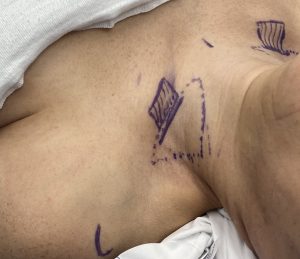
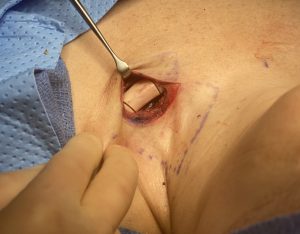
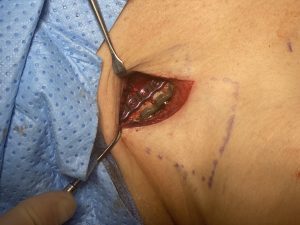 With 3.5cm long supraclavicular fossa incisions a 3cm segment of clavicle was removed from the right side. The clavicular segments were brought together in an end to end alignment and secured with a superior 3.5mm plate and screws with a smaller 2.5mm anterior plate and screws.
With 3.5cm long supraclavicular fossa incisions a 3cm segment of clavicle was removed from the right side. The clavicular segments were brought together in an end to end alignment and secured with a superior 3.5mm plate and screws with a smaller 2.5mm anterior plate and screws.
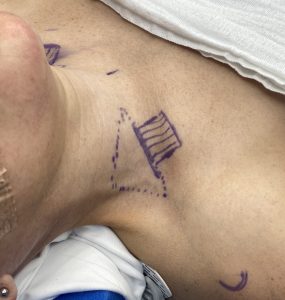
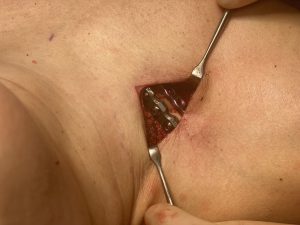 The identical procedure was performed on the left side with similar bone removal and plate and screw fixation.
The identical procedure was performed on the left side with similar bone removal and plate and screw fixation.
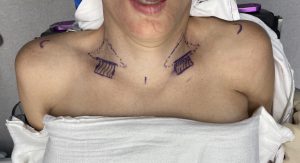
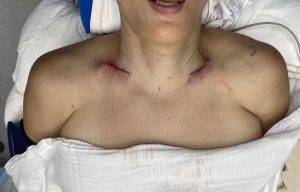 Her immediate on the table results showed the differences in he shape of her shoulders.
Her immediate on the table results showed the differences in he shape of her shoulders.
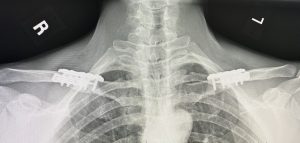 Her two day postpopertive x-ray showed good alignment of the two bone segments. Note that the diameter of the outer segment of the clavicle which was brought in is smaller than the inner segment. Which is consistent with the known anatomy of the clavicle where its greatest diameter is in the inner third of its length.
Her two day postpopertive x-ray showed good alignment of the two bone segments. Note that the diameter of the outer segment of the clavicle which was brought in is smaller than the inner segment. Which is consistent with the known anatomy of the clavicle where its greatest diameter is in the inner third of its length.
Case Highlights:
1) Reductive shoulder reshaping more accurately described the changes that occur in shoulder narrowing surgery.
2) Because the clavicle has a lazy s-shape segmental bone removal results in a combined inward and anterior shoulder movement.
3 )Reductive shoulder reshaping is done second in order when combined with rib removal waistline narrowing.
Dr. Barry Eppley
Indianapolis, Indiana

